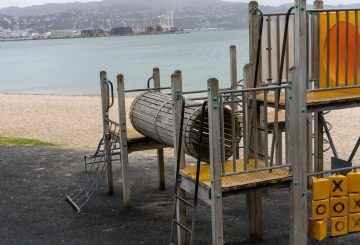이번 주에는 포괄적이고 과실이 없는 상해 보험을 제공하는 뉴질랜드 기관인 ACC (사고 보상 회사) 가 창립 50주년이 되는 날입니다.그러나 이 획기적인 사건으로 인해 시스템 내 변화의 필요성에 대한 논의가 촉발되었습니다.
ACC는 대법원 판사 오웬 우드하우스 경이 주도한 왕립위원회 조사를 거쳐 1970년대에 설립되었습니다.이 조사는 업무 관련 부상에 대한 부적절한 보상에 대한 노동자들의 불만이 제기되면서 촉발되었습니다.최초의 1973년 법률은 업무상 부상과 자동차 사고에 적용되었으며, 이듬해 개정안을 통해 적용 범위가 확대되었습니다.
지난 몇 년간 ACC가 처리하는 청구 건수는 연간 수백 건의 민사 분쟁, 약 5,000건의 근로자 보상 청구에서 연간 약 2백만 건으로 급격히 증가했습니다.또한 스포츠 부상 및 치료 중 학대와 같은 민감한 청구까지 보장 범위가 확대되었습니다.
그러나 비평가들은 민감한 청구 중 약 1% 만이 보상을 받는 등 시스템에 상당한 격차가 있다고 주장합니다.변호사이자 ACC 연구원인 워렌 포스터 (Warren Forster) 는 ACC 제도가 전 세계적으로 가장 우수한 시스템 중 하나이긴 하지만 모든 경우에 효과가 있는 것은 아니며 많은 경우에 정의를 제공하지도 못한다는 점을 인정합니다.
원래 ACC의 법률 컨설턴트였던 돈 레니 (Don Rennie) 는 현재 조직을 대형 보험 회사에 비유하면서 비판합니다.그는 1982년 ACC가 위원회에서 법인으로 전환하면서 부상자의 필요에서 재정 문제로 초점이 옮겨갔다고 믿습니다.
ACC 최고경영자 (CEO) 메간 메인 (Megan Main) 은 이에 동의하지 않으며, 지난 몇 년간 변화가 있었음에도 사람들을 돕는 조직의 원래 목적은 여전히 남아 있다고 말했습니다.그녀는 개선이 필요하다는 점을 인정합니다. 특히 클레임 건수가 증가하면서 재활 촉진자에게 압력이 가해지고 있기 때문입니다.하지만 그녀는 다른 어떤 국가와도 비교할 수 없는 ACC 고유의 포괄적이고 과실 없는 상해 보험 혜택을 기념하기도 합니다.
Main은 또한 정부의 공공 서비스 삭감과 ACC의 예산 6.5% 절감 계획을 지지합니다.그녀는 이러한 삭감이 고객 대면 직원에게는 영향을 미치지 않을 것이며 중복 및 불필요한 프로젝트를 없애는 것을 목표로 할 것이라고 확신합니다.




























































